Testing a couple of moisture meters
Moisture meters can be useful for detecting water leakages and problems with houses, in bathrooms and kitchens, and all kind of outdoor constructions. However, as the owner of a wooden boat I'm mostly interessted in using it for detecting problems with my boat.
I was going to have an introduction on why I need the moisture meter here, but it got long enough to qualify as a separate post. To be short, my boat is deteriorating due to moisture. I never really had a proper understanding of where the water enters, where there are problems with humidity and how to get rid of the humidity - a moisture meter can help me figure out of those things and possibly deal properly with them. I'm not much clever at those things (but I'm learning slowly). I suppose a good, old-fashioned boat carpenter can judge such things just by knocking on the wood and using the ears - but people like me needs a good moisture meter.
Moisture meters with pins
The typical kind of moisture meter one will find if searching the web for a moisture meter has sharp pins that one can stick into the wood, and it measures the electrical resistance between those pins. It's useful for checking firewood - it's not much useful on a boat.
I always had a problem trusting such meters - I suppose the conductivity varies not only with humidity, but also with the kind of wood it is. Well, it seems like I'm wrong - a good moisture meter measuring conductivity can give a very accurate reading from what I read on the internet - and even if it didn't, It doesn't really matter for me. What matters is that I can figure out what parts of the boat has the biggest humidity problems.
The biggest problem with the pinned meter is that it cannot measure what's behind the varnish or under the teak deck, and it cannot make a good measurement without sticking the needles into the wood making small holes. I've found some use for it - I can use it from inside the boat, on places where the holes won't be visible - and also, while replacing the glue in the teak deck I can use it to measure humidity in the wood below.
Pinless moisture meter
Now there exists another kind of moisture meter. The best search phrase seems to be "pinless moisture meter". On how it actually works ... that's probably a subject for a post into the STEMGeeks community. For the end-user it's "remote sensing" - it can detect humidity maybe 10mm away from the sesor - the exact distance varies between the different models. It's also (as opposed to sticking sharp needles into an object) "noninvasive". It has some drawbacks though - it's more expensive and the measurements are less exact. As said, I don't really need exact answers on how much moisture there is, I need to know where I have the biggest moisture problems, so that's fine.
While some of the moisture meters will yield a percentage just like the pinned meters, one is never supposed to trust it. The proper way to use a pinless moisture meter is to first take a reference measurement on a place where one has a reason to believe the wood is dry, and then measure other places and check the difference.
Testing a pinned meter
I have here one cheap pinned moisture meter bought from Jula

If you look closely, you can see that one pin is shorter than the other. Yup, the pins of this cheap thing from Jula is weaker than the wood of my boat. Or perhaps I managed to hit a layer of epoxy or maybe even glass fibre.
In the ceiling of the boat I have some insulating foam. I can stick the pins through it and a little bit into the wood.
9.8% - that's a lot more than expected. It's probably too much, and I don't really know what to do with it.
Such measurements will make small holes in the insulation, but they are not visible. Unless I go all overboard it's probably ok ...
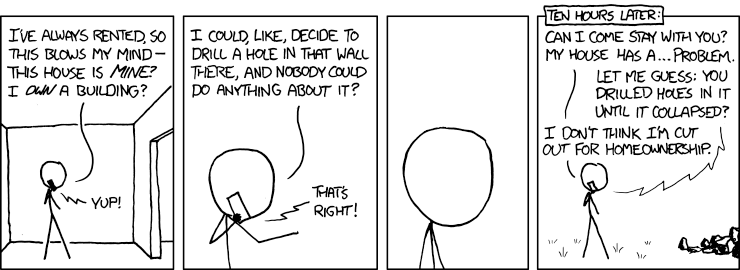
Here I've removed some of the glue between the teak planks, and I'm measuring 14.8% in the wood below. One thing - it can be quite hard to read the display dependent on what kind of position I'm holding the meter in. The meter has a button for holding the value on the display though.
That's also too much. While it stays open and it's not raining, it's probably drying a bit. Putting glue there now, while it's so humid, is probably not a good idea - problem is that it will start raining Sunday, so I have Saturday figuring out what to do with this. Perhaps I'll try to cover it with duct tape and hopefully it will keep the water out.
Since the meter is actually reading electrical resistance, it will of course report metal as "very wet". Here is my tin opener
The meter isn't smart enough to know if you're using it or not, and it turns itself off after a relatively short while - maybe one minute - typically in the middle of a measurement. Perhaps it's possible to tell it not to turn off that fast by using the buttons.
Testing a pinless meter
The other meter is a pinless meter, I think it said "Protimeter Aquant 2" on the shopping site, but on the underside it says "Protimeter Aquant POL5765" on the underside. Hm.
The meter does not try to guess the humidity more than "wet", "at risk" or "dry". It does show a number between 0 and 999 though. Here is the reading from that ceiling
It shows "dry" - but keep in mind that I was sticking the needles through the insulation. This meter is mostly measuring the humidity inside the insulation - and that should be zero. The measurement can still be useful, I can try to measure at different places of the ceiling and figure out where it's worst and where it's not a problem.
This is from the teak deck under the cockpit tent. It's almost never raining there since the tent is usually up, but I've had some humidity problems there sometimes. Anyway, the wood under the teak deck here should be perfectly dry - hence we can expect the wood to be perfectly OK if we find such readings other places on the teak deck. (I'm not sure how much role the temperature plays - admittedly, the temperature under the tent is higher than out on the deck).
Very high readings out on the teak deck. The meter also beeps when the meter exceeds 170 or 180 or something like that, and the beeping is more intense the more moisture it finds.
(I've already opened up the gap here and removed the glue. It's easy to see at the photo that I should be scrubbing the deck more often, and certainly before starting this work opening up the gaps in the teak deck. And I should have been vacuuming after opening up those gaps. I'm lazy. Perhaps that's why my boat is such a mess.)
A (glass) bottle of beer. The bottle is curved and the glass is thick, I had expected 999 here.
My own hand is saturated with water
I tried it on a package of milk, since it's flat and the paper is thin. With only one hand on the meter (the other holding the phone), I didn't manage to get a very close contact.
But finally I managed to get the expected reading:
So that's a problem with this thing - it works well on flat, hard surfaces, but if isn't flat, then just some few millimeters or a degree of angle can affect the results a lot. My teak deck is quite imperfect now, it's not completely flat. Another minor annoyance, one has to hold the button for five seconds to turn it off. Waiting for six minutes for auto-off is usually easier.
The pinless meter is also relying on electric properties. My mast foot looks wooden, but it is actually metal - and hence, it's considered to be wetter than water.
This means that things like screws in the wood can make a false reading.
Just like with the pinned meter, if you don't use the buttons, the meter has no way of knowing if you're using it or not - so it turns itself off after a while, maybe even in the middle of a reading. It's possible to adjust how long time it should take before auto-off.
Summing it up
I would strongly advice to get a pinless moisture meter if you have a wooden boat (and even for quite some non-wooden boats it can probably be useful). With some luck, leakages and hidden moisture can be found and fixed before it becomes a problem. For homeownes it can also be useful, the pinless moisture meter can be used to detect moisture behind the tiles in the bathroom, for instance.
Image credits
Most of the photos were taken by me and can be considered to be in the public domain.
The xkcd strip is made by Randall Munroe and is licensed under the Creative Commons Attribution-NonCommercial 2.5 License
One photo of the meter with a pin was taken from the Jula product page.
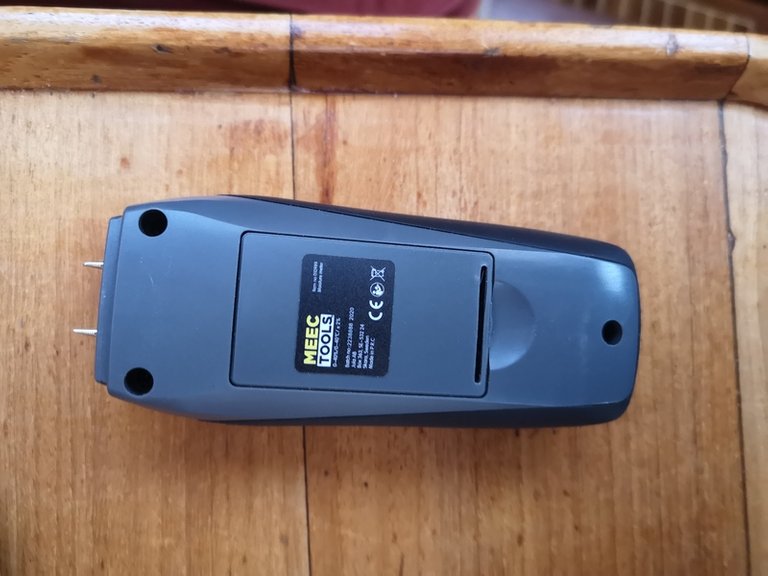

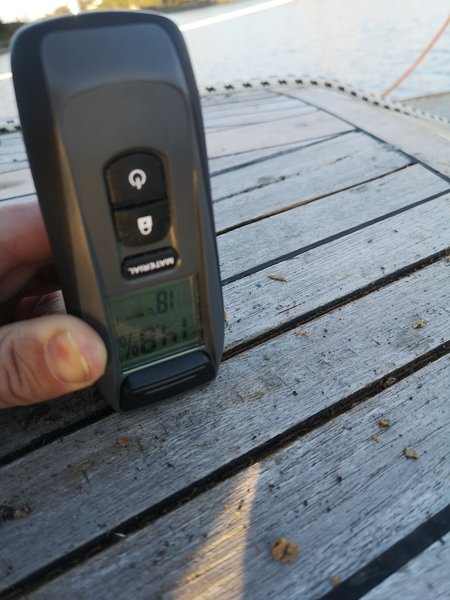

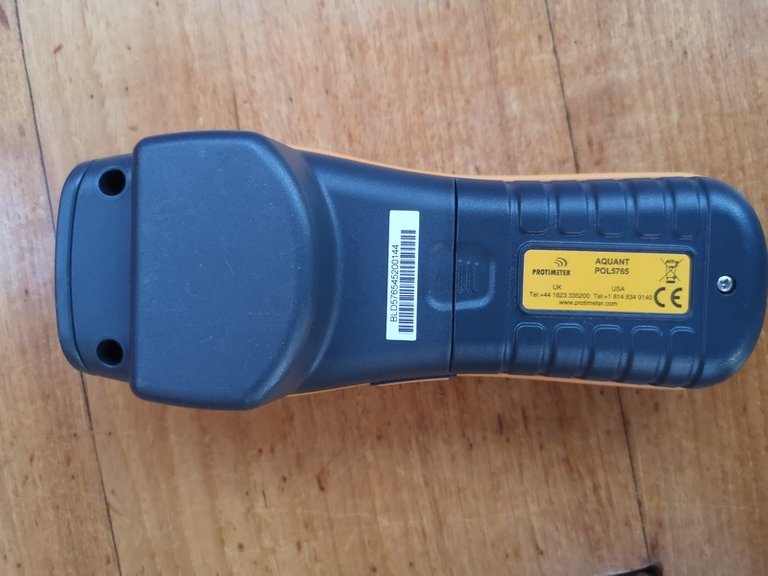
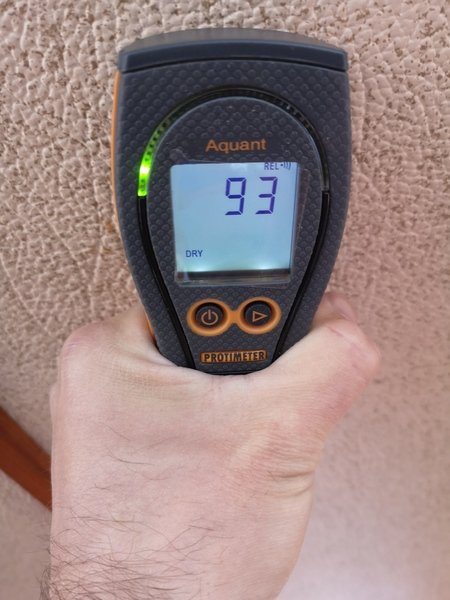
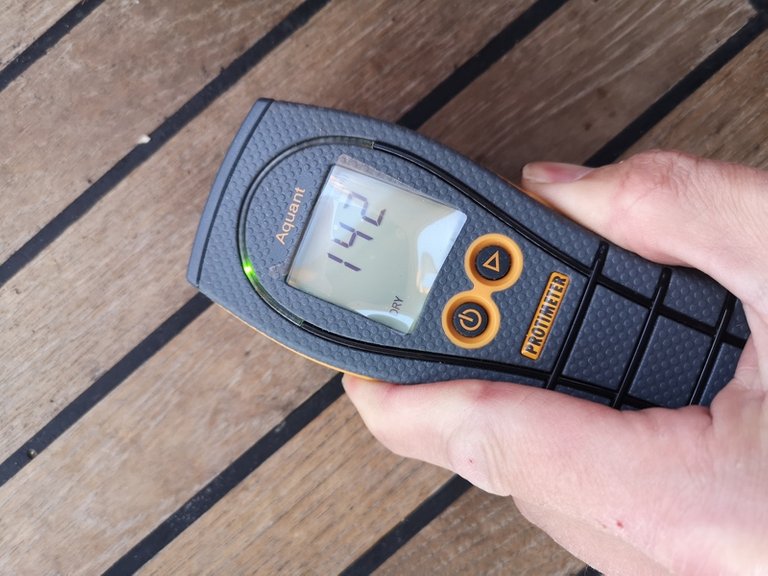


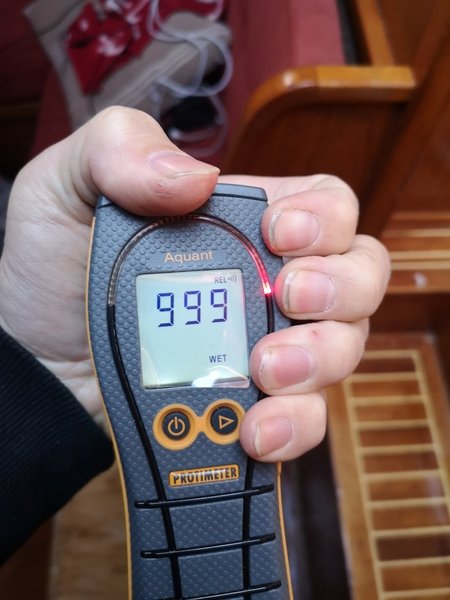
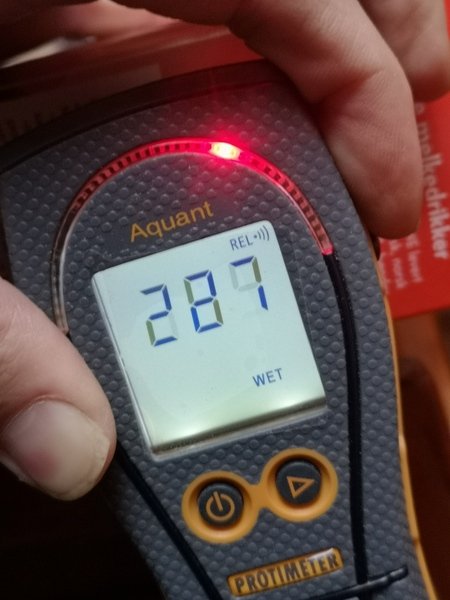

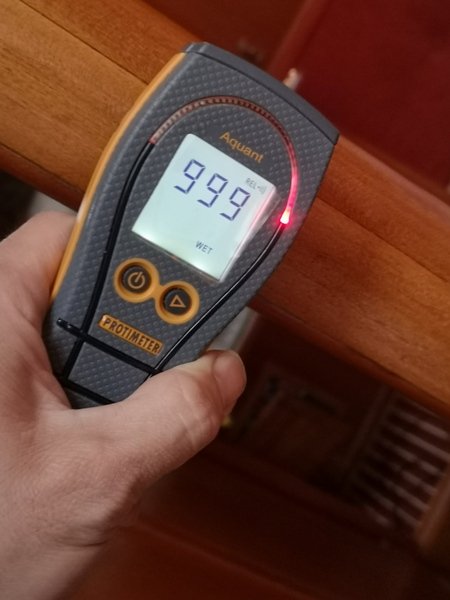
Hi @tobixen, it has been a long while since I have read one of your posts, I hope all is going well with you and your family. You are always so thorough with whatever you do, moisture measures are a useful tool to have in the house and it is good to know that a pinless measure is the best. Thank you, Angie
I don't have much family to take care of at the moment, so in theory I don't have much else to spend my time on now except work and preparing the boat for a family reunion in June. Things are going rather slowly though. It's a bit like Parkinson's law, "work expands so as to fill the time available for its completion". In his book he also had an example of the retired old lady who spent a full day for one small task (posting a letter).